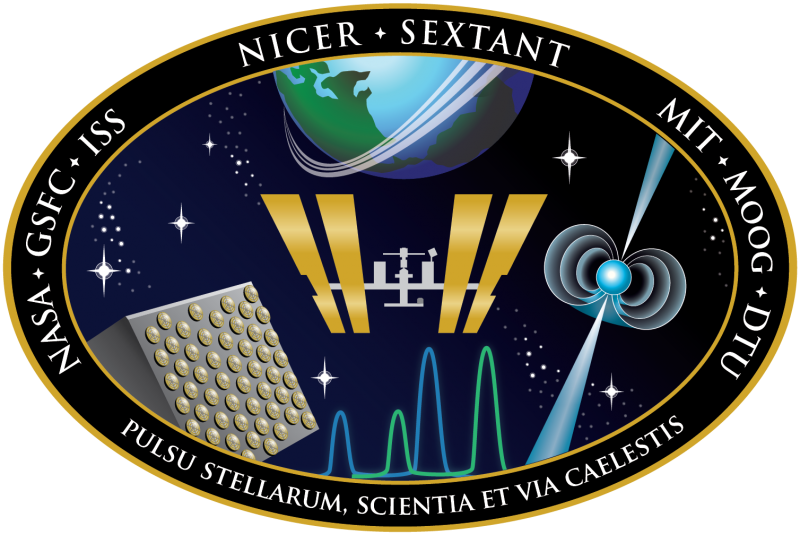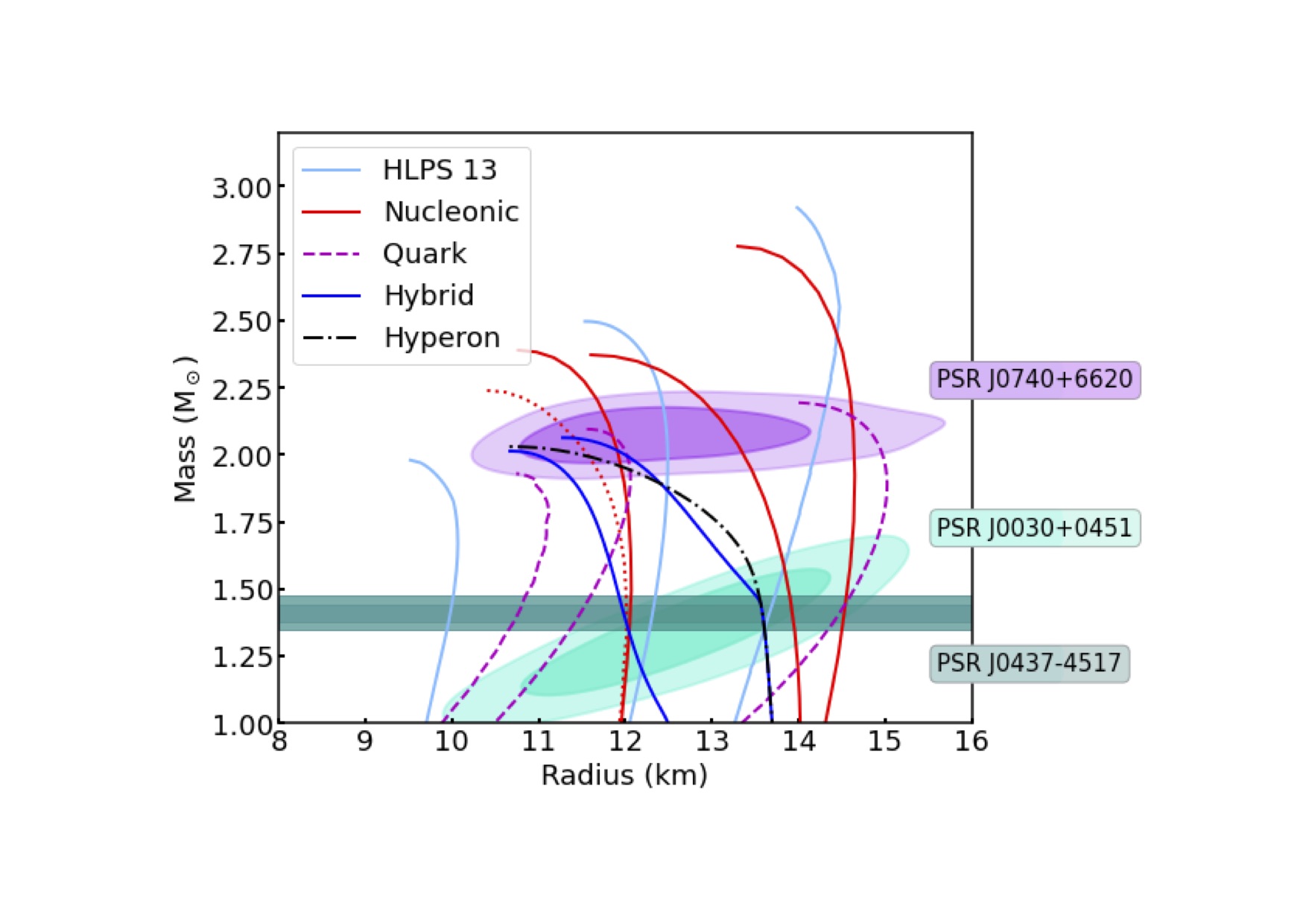Data
NICER Measures the Radius of the Most Massive Neutron Star

The Neutron Star Interior Composition ExploreR (NICER) collaboration has measured the radius of the neutron star with the highest known mass, PSR J0740+6620. NICER, an X-ray telescope installed on the International Space Station, uses a technique known as Pulse Profile Modelling. This exploits relativistic effects on X-rays emitted from the star’s surface – and the variation as the star rotates – to determine the mass and radius of the star. It also enables us to make a map of the hot emitting regions, which are linked to the neutron star’s magnetic field configuration.
JINA-CEE members at the University of Amsterdam led one of two independent analysis teams within the collaboration, using their open-source X-ray Pulse Simulation and Inference (X-PSI) code. Using a prior on the pulsar’s mass provided by NANOgrav and CHIME/pulsar radio timing, they found the radius of this ~2.1 solar mass star to be 12.4 (+1.3 – 1) km. This is very similar to the radius measured by the same team in late 2019 for PSR J0030+0451, even though that star was found to be much lighter, with a mass ~1.4 solar mass (see Figure). An accompanying multi-messenger Equation of State analysis with JINA-CEE collaborators at TU Darmstadt shows that the new radius measurement places tight constraints on the pressure of neutron star matter at around twice saturation density.

Further Reading:
Riley et al. A NICER View of the Massive Pulsar PSR J0740+6620 Informed by Radio Timing and XMM-Newton Spectroscopy
Raaijmakers et al. Constraints on the dense matter equation of state and neutron star properties from NICER's mass-radius estimate of PSR J0740+6620 and multimessenger observations
